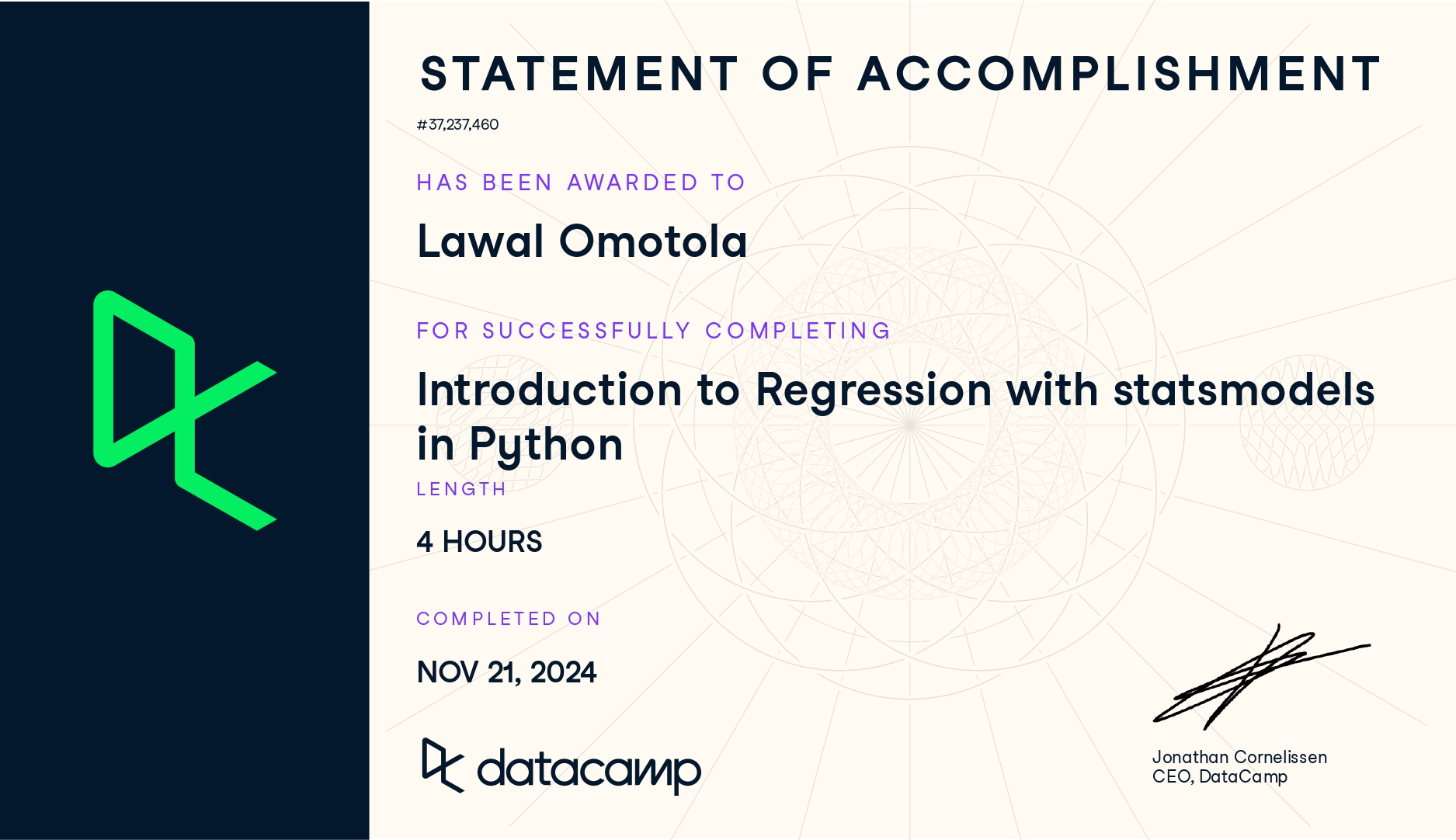
Completing the course on Introduction to Regression with statsmodels in Python, I gained a comprehensive understanding of regression analysis and its application in Python. Here’s a summary of what I learned:
Fundamentals of Regression: I learned the basics of regression analysis, including the difference between linear and logistic regression models.
Fitting Simple Linear Regression Models: I explored how to fit linear regression models with both numeric and categorical explanatory variables and how to interpret model coefficients to describe relationships between the response and explanatory variables.
Making Predictions: I learned how to use linear regression models to make predictions on various datasets, providing actionable insights from the model’s outputs.
Regression to the Mean: I gained an understanding of the concept of “regression to the mean” and its implications in statistical analysis.
Transforming Variables: I explored techniques to transform variables in a dataset to improve model performance and interpretability.
Model Assessment: I learned how to evaluate the fit of a regression model by asking specific questions and using diagnostic techniques to assess its accuracy.
Model Diagnostics: I discovered how to quantify the quality of model fits, diagnose problems with visualizations, and understand the influence of each observation, including its leverage, on the final model.
Fitting Logistic Regression Models: I learned how to fit logistic regression models, focusing on real-world applications. For example, I predicted the likelihood of a customer closing their bank account, interpreted probabilities of success, and understood odds ratios.
Model Performance Evaluation: I also learned how to assess model performance using confusion matrices, which help quantify the effectiveness of logistic regression predictions.
Check here for details.